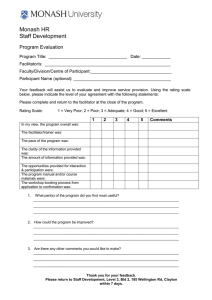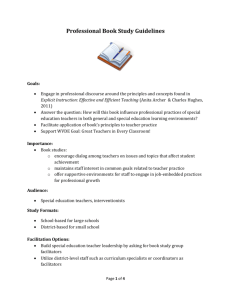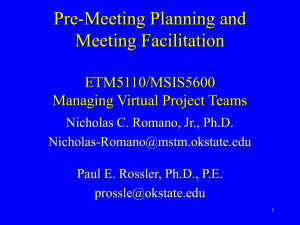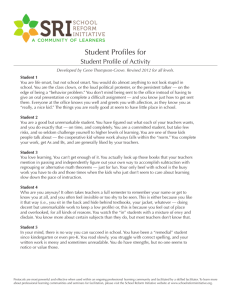Communication Facilitation
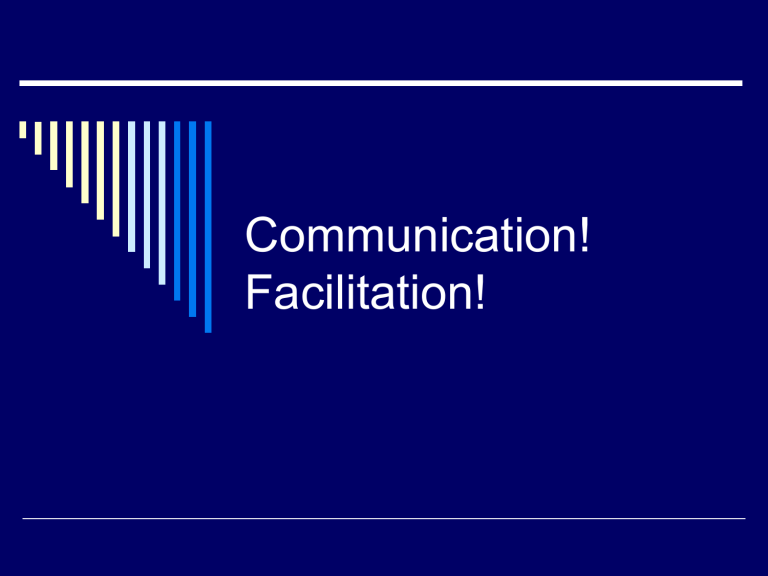
Communication!
Facilitation!
What is a Facilitator?
A facilitator/Leader must know how to build consensus and productively manage conflict within the group so that all points of view can be considered, but so that the group can ultimately make a decision.
What does a Facilitator do?
Create an open environment in which participants are comfortable sharing their ideas and experience.
Ensure that all perspectives, ideas, experience and other information needed is heard and considered.
Structure the discussion, and keep the discussion positive, productive and ensure that all participate.
Listens for and fosters group conscience, summarizes common thoughts and ideas, move the group toward a decision or other appropriate conclusion.
Reinforces the value of involvement to the individual, the group and the organization overall.
What is the impact of a good
Facilitator?
Participant energy, enthusiasm and commitment.
Participant awareness and knowledge.
Personal growth of participants.
Group productivity and quality of group decisions.
Group Unity.
CORE FACILITATION SKILLS
PROBING
Make sure each individual has a chance to contribute.
Clarify comments as needed and/or ask for more details.
Ask questions that solicit information or contributions from quieter participants at their level of comfort.
Validate all feelings and experiences shared.
Ask questions designed to solicit responses or discussion related to the point of the discussion.
Determine root causes of problems or issues.
Explore what can be learned from positive or negative experiences.
SYNTHESIZING
Highlight common thoughts and ideas among the group.
Build toward solutions by linking participants’ contributions.
Combine participants’ thoughts and ideas to support key points or generate greater insight into or understanding of the issue being discussed.
BRIDGING
Focus the conversation on the positive aspects of what can be accomplished.
Rephrase and/or relate comments to point under the discussion.
Encourage participants to apply the information shared to solving problems or achieving goals of the discussion.
Stress the value of the discussion and participant involvement.
TIPS FOR EFFECTIVE
MEETING FACILITATION
REMAIN OBJECTIVE
Guide the discussion, allowing different perspectives to come out without being judgmental. Once a balance of opinions have been presented, manage the group toward consensus.
KEEP ON TRACK
Be aware of the time allotted on the agenda to cover each topic. Let discussion continue among the group if it is productive and relevant to the topic,
But move the group on if time runs out.
ENSURE ALL PARTICIPATE
Make sure everyone has a chance to participate. To do this, you may need to ask some to be brief in their comments, while drawing others into the conversation.
MAKE PARTICIIPANTS
COMFORTABLE
Create an open environment —one that makes it comfortable for participants to say what is on their minds. Validate feelings and opinions and positively recognize contributions, but constantly drive toward the key point or decision to be made.
BE ATTENTIVE TO THE
GROUP
Make it clear you are listening to participants, comments and ideas. If appropriate, list them on a flipchart. In addition, keep eye contact, nod your head, say things like ‘uh-huh’ and ‘good point,’ to indicate you are receiving and understanding their input. Rephrase if necessary.
ASK FOR INPUT FROM
OTHERS
Use one response to generate other ideas. Say things like ‘what other ideas, answers, points can be shared that relate to what was just said?’
ASK OPEN-ENDED
QUESTIONS
Avoid asking questions which requires a yes response. It closes conversation down. If such questions are asked, follow up with questions like ‘why,’
‘where,’ ‘when’ and ‘how’.
ASK FOR SPECIFIC
EXAMPLES
To generate more discussion, ask participants to give concrete examples that illustrate their point. This will help other to ‘visualize’ the application of the information provided.
